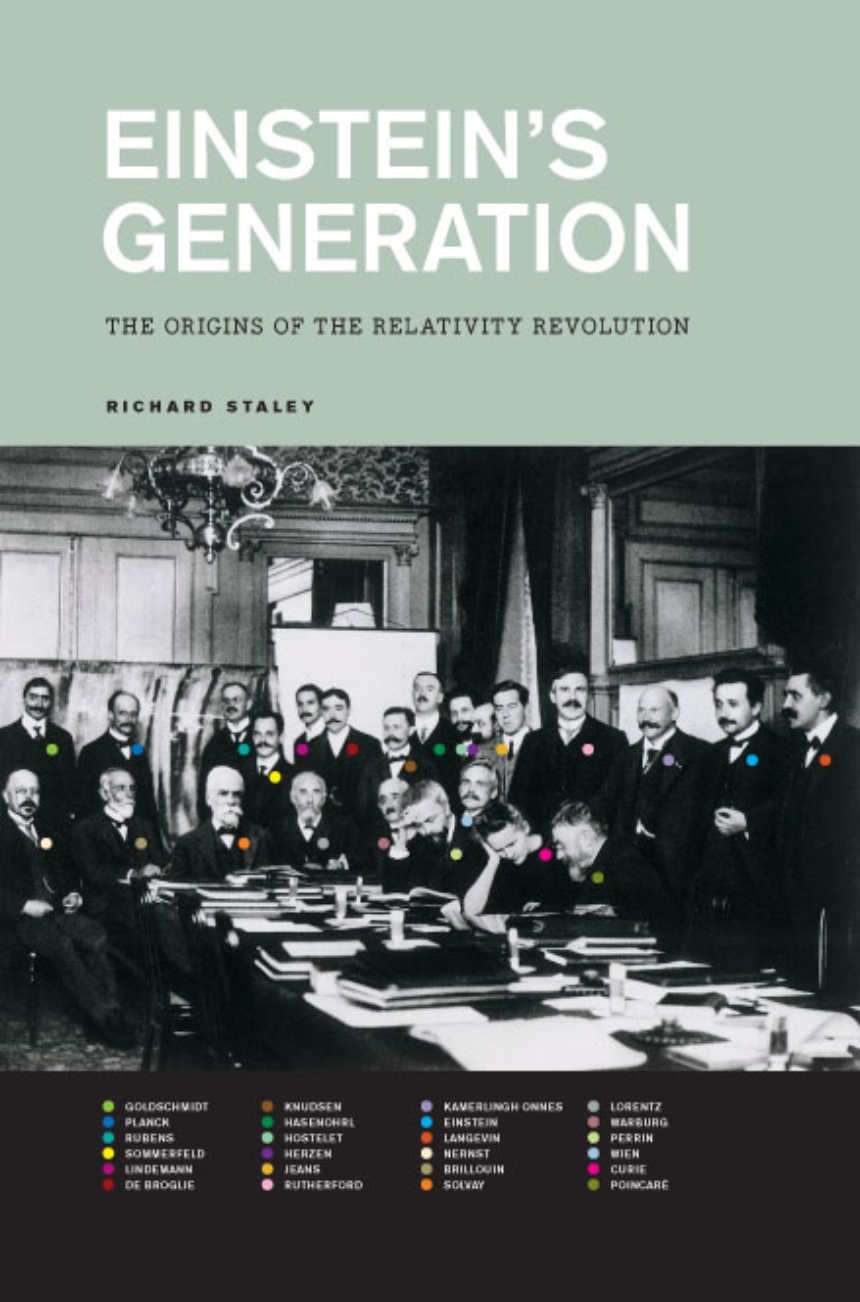Einstein’s Generation
The Origins of the Relativity Revolution
Why do we celebrate Einstein’s era above all other epochs in the history of physics? Much of the history of physics at the beginning of the twentieth century has been written with a sharp focus on a few key figures and a handful of notable events. Einstein’s Generation offers a distinctive new approach to the origins of modern physics by exploring both the material culture that stimulated relativity and the reaction of Einstein’s colleagues to his pioneering work.
Richard Staley weaves together the diverse strands of experimental and theoretical physics, commercial instrument making, and the sociology of physics around 1900 to present the collective efforts of a group whose work helped set the stage for Einstein’s revolutionary theories and the transition from classical to modern physics that followed. Collecting papers, talks, catalogues, conferences, and correspondence, Staley juxtaposes scientists’ views of relativity at the time to modern accounts of its history. Einstein’s Generation tells the story of a group of individuals which produced some of the most significant advances of the twentieth century; and challenges our celebration of Einstein’s era above all others.
504 pages | 29 halftones, 16 line drawings | 6 x 9 | © 2009
Physical Sciences: History and Philosophy of Physical Sciences
Reviews
Table of Contents
Chapter 1. Introduction: Einstein’s Generation
I. From Ether Drift to Interferometry
Chapter 2. Albert Michelson, Velocity of Light, and Ether Drift
Chapter 3. Interferometers and Their Uses
II. Physics in 1900
Chapter 4. Science on Display: The World’s Fair
Chapter 5. A Discipline at Work: The International Congress of Physics
III. From the Promise of the Electron to Einstein’s Theory of Relativity
Chapter 6. The Empirical Electron: Space and Time on a Photographic Plate
Chapter 7. Relativity and Electron Theory, 1905–1911
Chapter 8. On the Histories of Relativity
IV. From Classical to Modern Physics
Chapter 9. On the Co-Creation of Classical and Modern Physics
Chapter 10. The Solvay Council, 1911
Bibliography
Index
